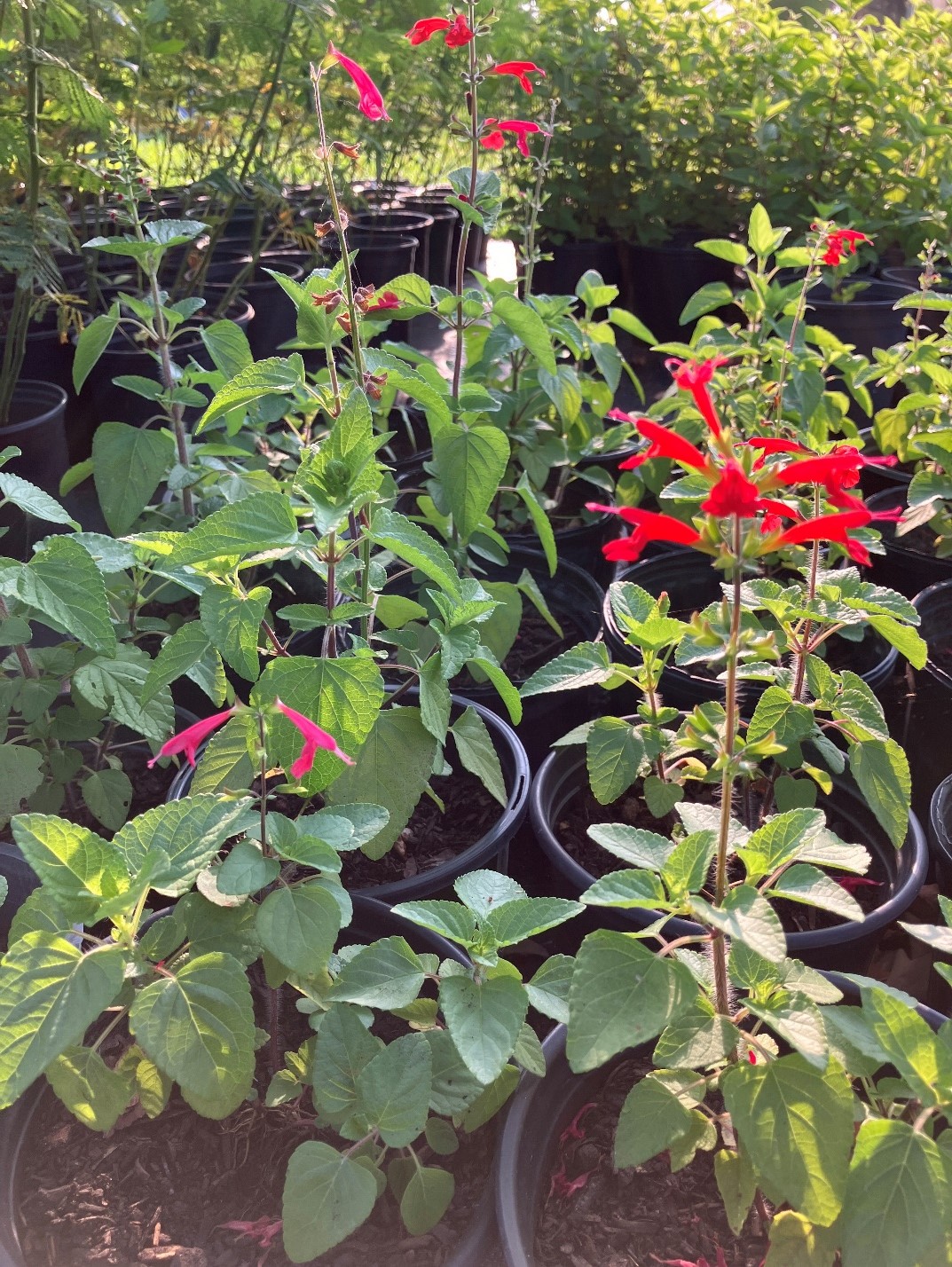PUBLISHED: September 2024 By Ron Butler, HPB Nursery Technician
As a nursery technician for Houston Parks Board — and as an everyday person who likes to hike and run on trails throughout the Bayou Greenways system — I do not see as many hummingbirds as I used to. When I talk with members of other conservation organizations about the lack of sightings they seem to agree.
Spotting a hummingbird is a real treat. So, how can individuals improve the sighting of our lovely hummers? Yes, we can put up feeders and that may help, but why not add beauty to your landscape while attracting the little hummers? Native plants are a great option that are hummingbird-friendly and landscape-worthy.
Let’s start with one of our most common native plants, the Turk’s Cap Mallow (Malvaviscus arboreus var. drummondii). This plant has red bishops, cap flowers, and large maple-like leaves. Please keep in mind that a pink and a white flowered Turks Cap exists, but the red flowered version is our true native. Turk’s Cap prefers partial to full shade areas and moist soils. They can survive dry periods, but they look their best when they are consistently moist. Turk’s Cap can reach 3-to-6-feet of height depending on their location, which makes an excellent pathway for the little hummers to easily seek the lower areas. It operates best as a back of a border or near a fence. Plants will go to sleep if they are frozen but will bounce back when the weather warms!

The Scarlet sage (Salvia coccinea) is another great option and will work well with the Turk’s Cap. This native salvia is much shorter in height at roughly 12 to 18 inches and it prefers moist soils, which is a great contrast to the Turk’s Cap and helps guide more hummingbirds to the area. Scarlet sage can be either a perennial or annual plant. If you cut the spent flowers, you can prolong the life of the plant and encourage continuous flowering cycles. If you do not, then it will go to seed readily, and you will have more plants soon to have or share.

Do you have a trellis or arbor that you would like to fill? Consider the Coral honeysuckle vine (Lonicera sempervirens). This non-aggressive, evergreen to semi-evergreen native-vine can reach up to 16 feet high but is easily trained and manageable in most landscapes. This vine survives full sun to partial shade and the flowers are tubular, ranging from red to a coral which makes this a hummingbird’s delight.
NOTE: This can be easily confused with the Japanese Honeysuckle (Lonicera japonica) which will take over and is extremely hard to remove!


Lastly, let’s look at the orange Butterfly weed (Asclepias tuberosa). Attracting butterflies and hummingbirds, this native plant is a two-for-one deal and is much shorter than the other options. The plant has bright orange flowers, not red like the others. Some may think that this plant is only meant for butterflies. Well, because of the bright orange clusters of semi-tubular flowers, this plant attracts hummingbirds as well. Orange Butterfly weed is 12-to-15 inches tall and in most cases, it has a low shrubby growth habit that prefers either dry or super well drained soils. This makes the plant excellent for pocket prairies and small spaces in the landscape. Orange Butterfly weed will go to sleep in the wintertime and bounce back early to mid-spring each year.
NOTE: This can easily be confused with the non-native Tropical Milkweed (Asclepias curassavica). Other than its controversy of how safe the plant is for insect species, it is a much taller plant and slightly freeze sensitive.

